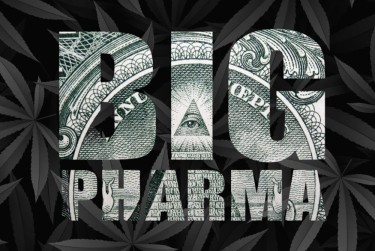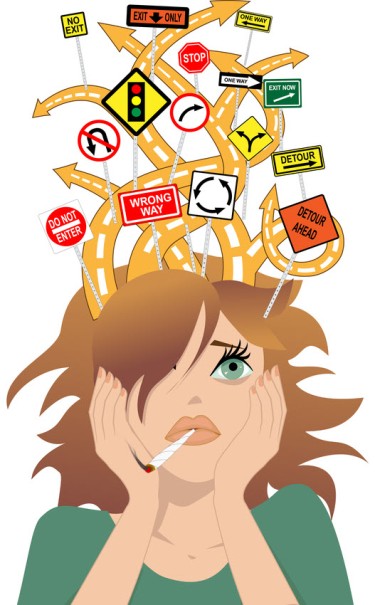
The Double Standards of Pharma:
As adults, it’s our responsibility to protect our youth and set them up for success. After all, they’re the ones who will inherit this planet after we’re gone. That’s why we typically discourage drug use for teens and kids – research shows the human brain continues developing well into our mid-20s. Messing with that vital growth could have lifelong implications.
So when I read a recent article honing in on how cannabis impacts still-developing adolescent minds, it definitely gave me pause. The research suggested that even occasional marijuana use may hamper key cognitive abilities in teens such as memory, verbal skills, and attention. If true, that’s alarming news for youth health and safety.
But the study also made me think – do we scrutinize common pharmaceuticals prescribed to children with the same level of scientific rigor? Stimulant medications like Adderall and Ritalin are handed out like candy these days to millions of kids with ADHD diagnoses. Just like cannabis, these are powerful substances that alter neurotransmitters and signaling in the brain.
From a chemical standpoint, prescription amphetamines aren’t all that different from cocaine or meth – they’re just carefully manufactured and dosed. Yet few blink an eye at their widespread pediatric use. You have to wonder, do these meds also shape and reshape malleable young minds? And if so, are the outcomes necessarily good?
I’m not suggesting medical conspiracy theories or anything so extreme. But I do think it’s fair to ask tough questions regarding societal assumptions about drug safety and medical necessity. If cannabis warrants extra investigation regarding youth neurological impacts, shouldn’t wildly popular stimulants prescribed to struggling children?
In this article, I’ll break down what science suggests so far about potential cognitive effects of common ADHD meds, including Ritalin, Adderall and their chemical cousins. I’m approaching this analysis cognizant of very real pediatric challenges but also aware of America’s tendency to over-medicate in lieu of alternative strategies. My goal isn’t condemnation but rather constructive dialogue. If we don’t carefully monitor pharmacological impacts on the most vulnerable developing minds, who will?
ADHD medications refer to stimulants and non-stimulants used to treat Attention Deficit Hyperactivity Disorder symptoms. The most commonly prescribed ADHD meds in the U.S. are methylphenidate (brand names Ritalin or Concerta) and various amphetamine salts (branded as Adderall or Vyvanse).
These stimulants boost levels of dopamine and norepinephrine in the brain – neurotransmitters involved in concentration, reward pathways, and impulse control. By chemically altering signaling, the medications can improve focus and temper hyperactive symptoms of ADHD.
Use of these medications has skyrocketed over the past two decades, especially among youth. One survey found almost 10% of kids aged 4-17 have received an ADHD diagnosis, a 42% increase since 2003. Prescription rates track accordingly.
Pharmacies filled over 43 million ADHD med prescriptions just for those under 18 years old in 2019. That translates to approximately 1 in every 7 American kids taking powerful brain stimulants before reaching adulthood.
For context, stimulant prescription rates are 3-4x higher in the U.S. compared to the U.K. and other Western peers. This pattern holds true across American demographics as well – white youth are 66% more likely to receive ADHD meds compared to Hispanic kids and over 2.5x more likely than black peers.
When we look past the clinical packaging and FDA blessings, ADHD stimulants have a lot in common with illicit methamphetamine. Stick with me here.
Chemically speaking, substances like Adderall, Ritalin and meth belong to the amphetamine class of stimulants. They differ by only a molecule or two. For example, meth has an extra methyl group compared to amphetamine itself. Not a huge difference when it comes to brain effects though.
Both prescription and crystal meth surge dopamine and norepinephrine signaling through similar pathways involved in mood, cognition and movement. In therapeutic contexts, these neurotransmitter spikes can improve focus and concentration. Outside medical oversight, they create a stimulating high with risks of abuse and long-term changes.
Make no mistake – used properly under close supervision, ADHD meds offer real benefits to struggling kids. But we tend to downplay uncomfortable similarities to illicit stimulants, perhaps to avoid stigma. Still, from a neurochemistry perspective, prescription amphetamines aren’t so different from cocaine or meth after all.
If abuse of addictive drugs like meth rewires young developing brains for the worse, wouldn’t smaller doses of medical meth do the same? What if stimulant-fueled concentration comes at the cost of mental health later in life? Are we over-medicating childhood uniqueness out of millions of one-day adults?
These are uncomfortable but necessary questions as ADHD diagnosis and stimulant prescription rates soar. Applying the same level of scientific scrutiny given cannabis seems only prudent and ethical. Because once pediatric neurobiological doorways close, there may not be going back.
When looking at widespread issues like ADHD, obesity or mental health, our societal reflex is often to medicate first and ask questions later. There’s a pill for every ill. But for the sake of future generations, I believe we need to rethink this knee-jerk approach.
Don’t get me wrong – pharmaceuticals have a vital role for treating acute issues or severe chronic conditions when strictly needed. But soaring rates of pervasive health problems in kids suggest our paradigm is failing. We lean on meds as crutches rather than putting in the harder work of prevention.
What if instead of expecting children to conform to increasingly rigid standards, we adapted systems to nurture their innate diversity? Personalized education to suit different learning styles. Recess over standardized tests. Activity-promoting communities not designed solely for cars. Healthy school meals and nutrition education. Media limits and less stimulus overload.
The list goes on and on.
Similarly, so much chronic disease in adulthood is traceable to behaviors and exposures during youth – diet, inactivity, sleep disruption, stress, environmental toxins. Shielding developing minds and bodies from harm today pays exponential dividends later.
But prevention takes more upfront work and societal commitment. Pills provide quick relief of symptoms, not addressing root causes. Before millions more kids are declared abnormal and doused with stimulants, let’s dig deeper into lifestyle approaches. The most ethical medicine strives to first do no harm. With children’s wellbeing at stake, nothing less should suffice.
At the end of the day, my beef isn’t necessarily with cannabis or prescription pills themselves. As an avid psychonaut, I believe consciousness-altering substances, even risky ones, can provide occasional windows to our deeper selves when used consciously.
But therein lies the catch – responsible, intentional use is everything. Far too often in modern society, powerful substances become crutches rather than tools. We relinquish personal power to pharmaceutical companies all too happy to medicate away deeper issues.
Turning to daily chemical assistance to force children into societal molds, boost grades or secure college spots reflects a sickness – one deeper than any tally of ADHD symptoms. As does a medical paradigm eager to dole out synergistic meth amphetamines yet crucify sacred plant medicines.
Until the day we rethink systems and structures preventing kids from thriving as their whole, authentic selves, I’ll continue calling out over-reliance on pervasive pill-popping. Start with roots, not symptoms.
And to those quick to condemn youth cannabis based on questionable cognition studies, I implore: apply the same scrutiny to so-called “medication” prescribed to the most vulnerable developing minds. Adderall and Ritalin shape malleable neurocircuitry as assuredly as any joint.
At some point, we must transcend chemical quick-fixes and harness lifestyle, community, policy and cultural changes that foster holistic health. Our children’s future certainly depends on it. And who knows, maybe the adults running this circus could use an extended tolerance break as well.
ADHD, CANNABIS AND BIG PHARMA, READ ON…
DO 55% OF CANNABIS USERS REALLY HAVE ADHD? READ THIS!
- SEO Powered Content & PR Distribution. Get Amplified Today.
- PlatoData.Network Vertical Generative Ai. Empower Yourself. Access Here.
- PlatoAiStream. Web3 Intelligence. Knowledge Amplified. Access Here.
- PlatoESG. Carbon, CleanTech, Energy, Environment, Solar, Waste Management. Access Here.
- PlatoHealth. Biotech and Clinical Trials Intelligence. Access Here.
- Source: http://cannabis.net/blog/opinion/the-big-pharma-double-standard-adhd-medication-and-meth-more-alike-than-wed-like-to-admit




